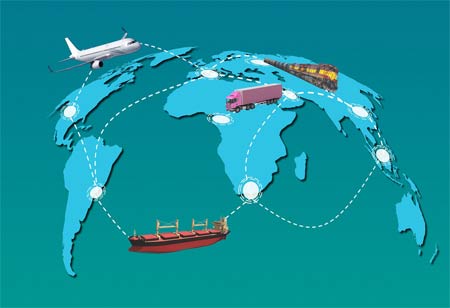THANK YOU FOR SUBSCRIBING
THANK YOU FOR SUBSCRIBING

By
Logistics Transportation Review | Monday, September 02, 2024
Stay ahead of the industry with exclusive feature stories on the top companies, expert insights and the latest news delivered straight to your inbox. Subscribe today.
Given the hazardous nature of oil and gas, ensuring a secure transit process is crucial for the people and environment around these substances.
FREMONT, CA: Transporting different materials requires different precautions and care. Some commodities have a limited shelf life, and it is important to ensure that they don't deteriorate during the transit process. These items require refrigeration, while products like oil and gas demand careful consideration of safety measures.
Given the hazardous nature of oil and gas, ensuring a secure transit process is crucial for the people and environment around these substances. Therefore, implementing strong safety protocols is essential when handling these products. This article discusses four critical safety tips for safely delivering these products.
Using the correct mode of transportation
The means of transportation utilized play a vital role in safely delivering these items. Oil and gas can be transported via multiple modes of transportation, such as rails, pipelines, trucks and tanker ships.
There are multiple options available, but the key to using the right mode of transportation is paying attention to the fact that the mode chosen should be highly reliable and should not change the temperature of the gases and oil at any cost.
Driving within speed limits
The speed limit applies when oil and gases are transported via road in trucks. Driving at high speeds is a major contributor to road accidents. If the trucks carrying these products come in contact with any inflammable substance, it could result in a huge explosion, causing loss of life and property nearby.
Collapsing with any object or a tire burst in the vehicle can also lead to fatal outcomes. Hence, it is crucial that trucks are regularly investigated for faulty engines or tires and that drivers operate within the speed limits assigned.
Driver training
Adequate training for drivers during transit, especially defensive driving, is crucial. This skill is essential for preventing accidents and handling other drivers on the road, particularly when transporting delicate products.
Training them to properly handle oil and gas before, during, and after transport is also essential to prevent potential accidents.
Putting up warning signs
Warning indicators are valuable tools for alerting road users to the presence of vehicles carrying flammable materials. Many trucks and vehicles transporting oil and gas are equipped with prominent warning signs featuring flame and hazard symbols.
Ensuring these signs are large enough to be easily seen from afar is crucial. Furthermore, utilizing bold colors on the warning signs can enhance their visibility and ensure they are easily noticeable.
I agree We use cookies on this website to enhance your user experience. By clicking any link on this page you are giving your consent for us to set cookies. More info





